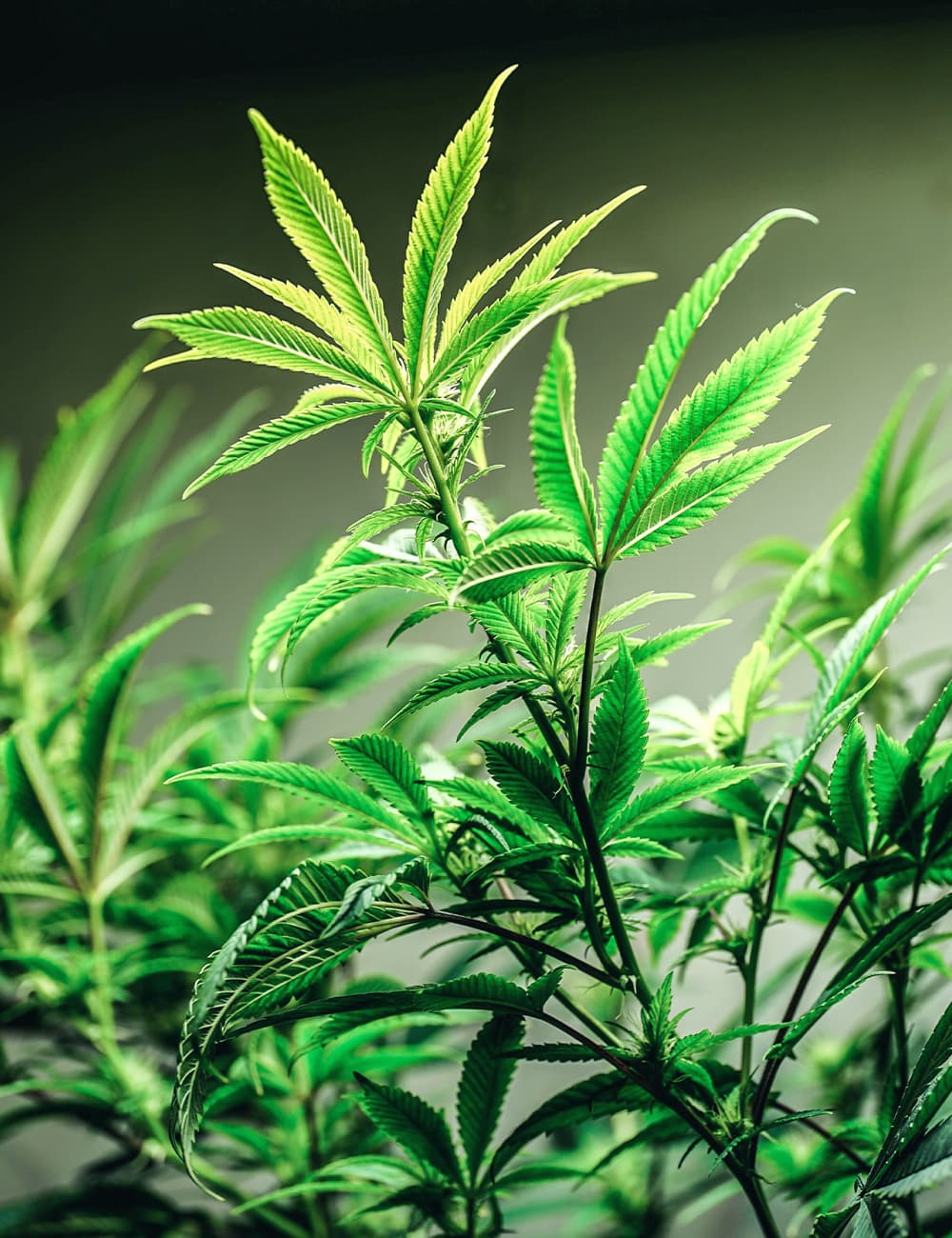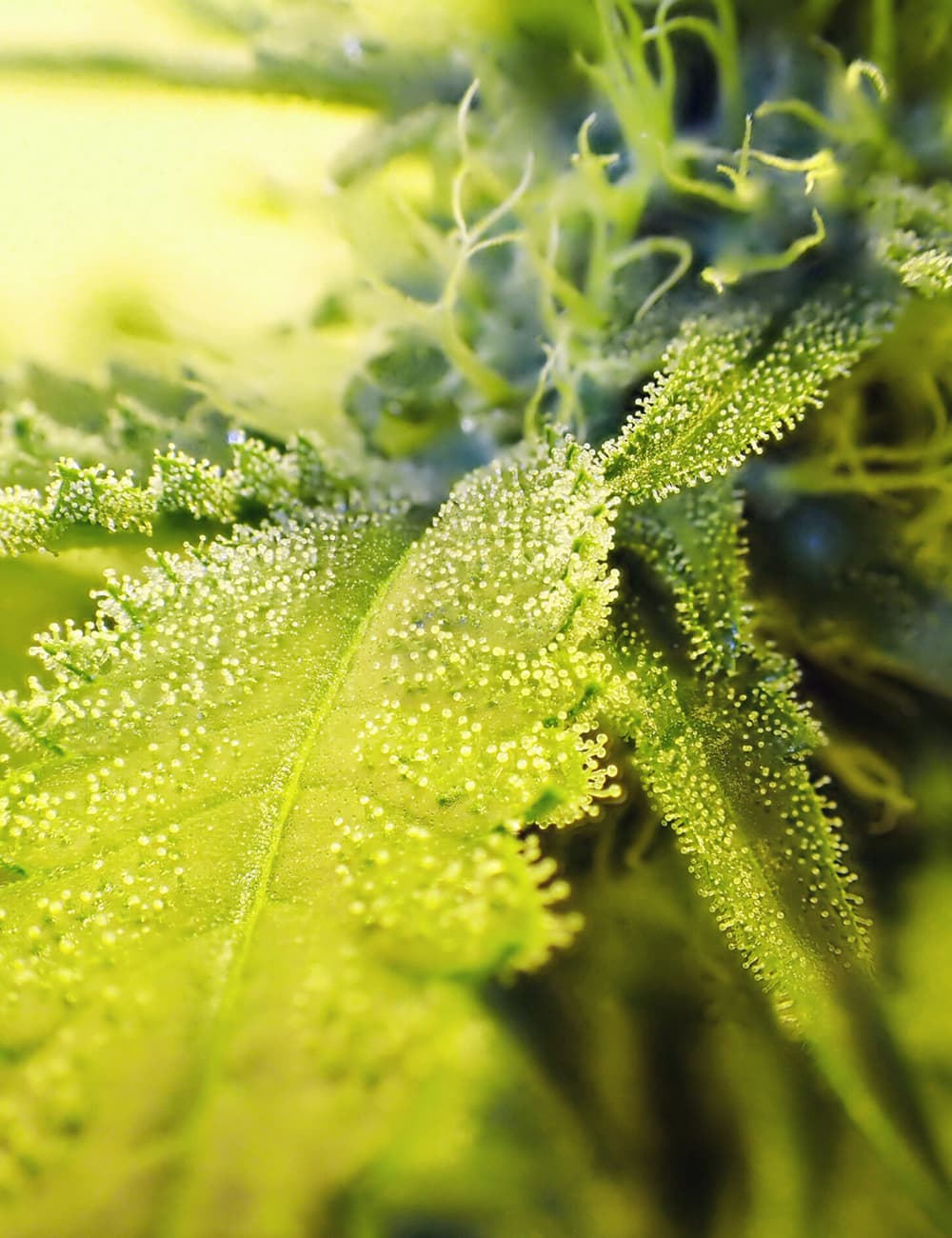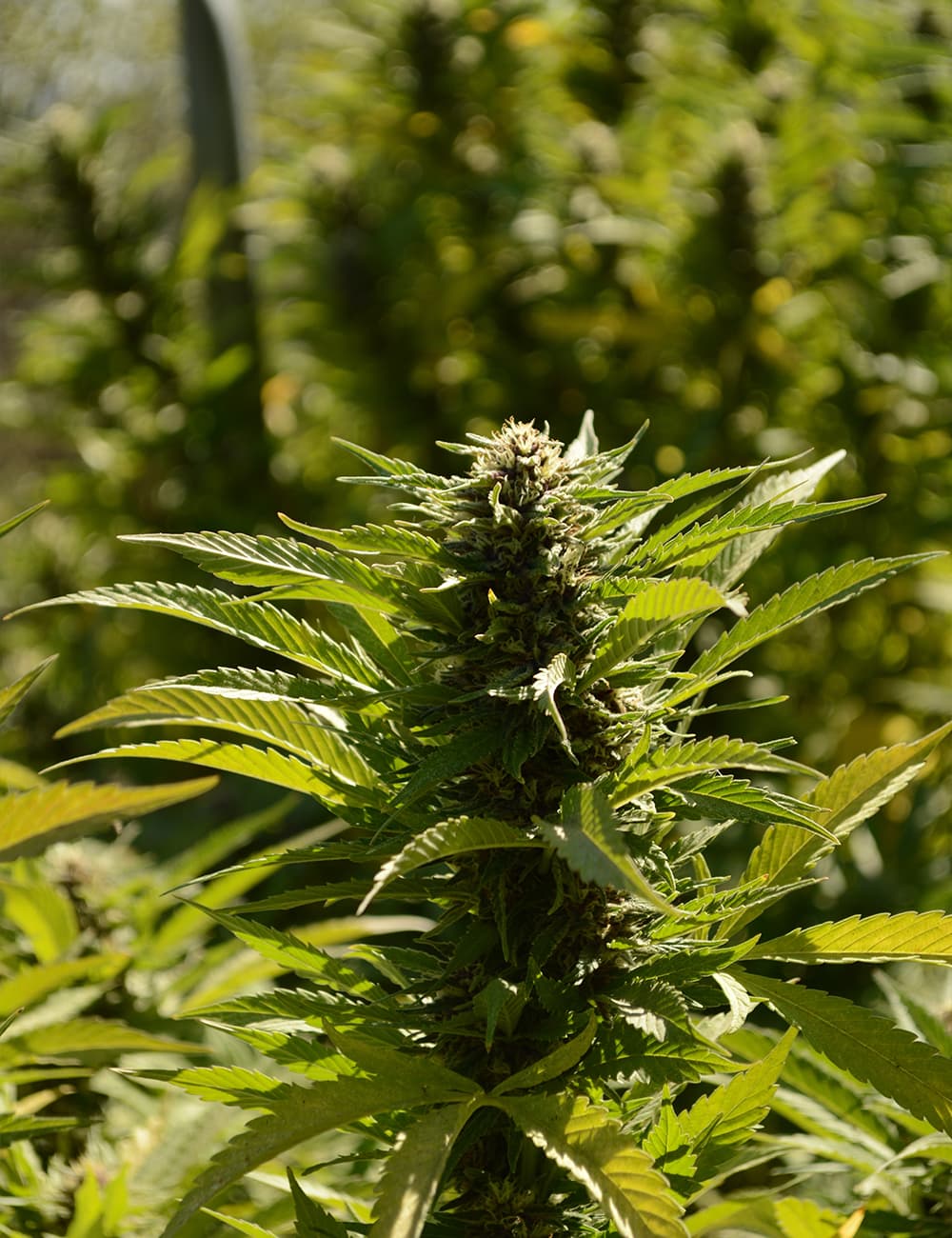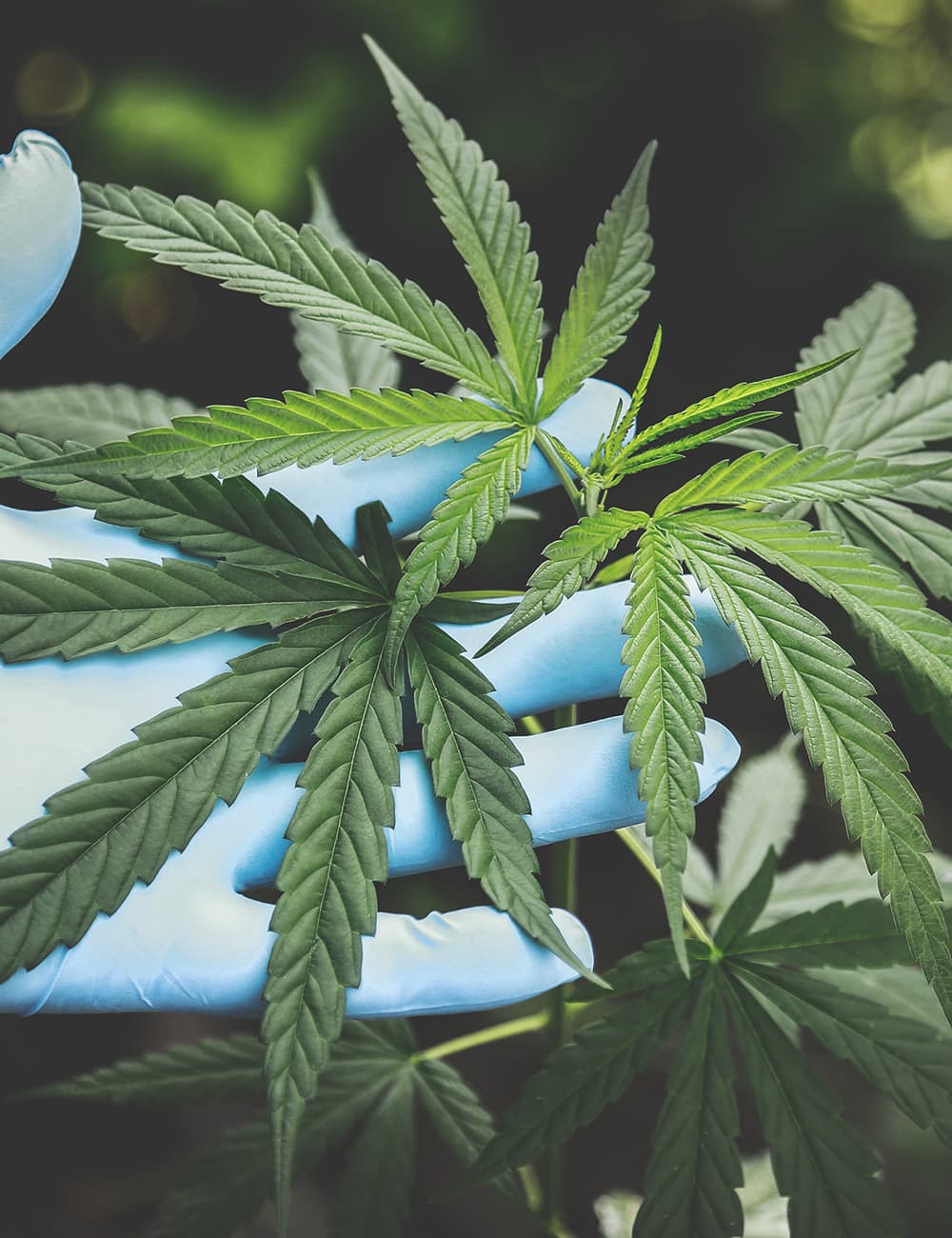

The cannabis plant is rich in natural compounds, of which more than 500 have been identified.1 Cannabinoids, terpenes as well as other volatile substances are mainly found in special plant hairs, the trichomes, that are found in their highest concentration on the unpollinated female flower.2,3 Phytocannabinoids (e.g. THC or CBD) and terpenes are the most medically relevant compounds of the cannabis plant.
The best studied and described phytocannabinoids present in the cannabis plant are THC as well as CBD. They are present in the unprocessed cannabis flowers mainly as carboxylic acids, THCA and CBDA; and are hardly pharmacologically active. Heating decarboxylates the acids to the pharmacologically active molecules THC and CBD.
Most terpenes are major constituents of the essential oils produced in plants. To date, approximately 200 different terpenes have been identified in the cannabis plant.4 As with phytocannabinoids, the majority of terpenes are found in the resin of the trichomes of female cannabis flowers.
The most common terpenes in cannabis are limonene, myrcene, pinene, linalool, and caryophyllene. The composition of terpenes depends on the genetic background (cultivar) of the plant as well as the conditions of cultivation and strongly determines the aroma of the cannabis flower. Based on the chemical composition between phytocannabinoids and terpenes, one can differentiate chemovars of the cannabis plant.5, But so far there is no uniform nomenclature of these chemovars.
Cannabis has been used by humans as a medicine for various indications for over 4,000 years.6
In India, cannabis was used as a painkiller, anticonvulsant, anxiolytic and for the treatment of rheumatic complaints as early as 1,000 BC. One of the most influential medical writers of the Middle Ages, the Persian physician Avicenna, described cannabis around 1,000 AD as an effective medicine for treating gout, edema, infectious wounds and severe headaches. In 1839, the Irish physician William O'Shaughnessy became the first Western medical practitioner to prepare extracts from cannabis. He used these as spasmolytics and analgesics. In the early 20th century, cannabis had established itself as a medicine and was successfully used as an alternative to opioids.
Further standardization of cannabis therapy was temporarily slowed in the 20th century by the increasing proscription of cannabis and the simultaneous spread of alternative synthetic medicines. Global criminalization began in 1937 with the Marijuana Tax Act, which criminalized the medical possession and use of cannabis throughout the United States.
In 1961, the U.S. enforced its then position on medical cannabis internationally in the Single Convention on Narcotic Drugs, which placed the medical use of cannabis under significant restrictions in all UN member states. Subsequently, medical cannabis was outlawed in nearly every country in the world.

In order to control the pharmaceutical quality of medical cannabis, the steps from production to storage, determination of the content of the active ingredients and testing of purity are specified and standardized.

This is based on the monographs of the German Pharmacopoeia for cannabis flowers (Cannabis flos) and for cannabis extracts (Cannabis extractum normatum). Due to natural variations in the active substance content of the cannabis plant, a deviation in the cannabinoid content of ±10% from the amount of cannabinoids stated in the specification is defined as acceptable here for both, flowers and extracts.
The European Pharmacopoeia serves as the parent reference for the quality control of medicinal cannabis. It specifies the analytical methods for potential contamination by heavy metals (cadmium, lead, mercury), pesticides, and microorganisms (e.g., yeasts, molds, Salmonella, E.coli).
In order to unify the different national standards, an overarching, harmonized monograph for cannabis flowers is currently being developed for the European Pharmacopoeia, which will define common quality standards for the entire European pharmaceutical cannabinoid industry.
1 Saroya, A. S. The Phytocannabinoids. Contemporary Phytomedicines (2017).
2 Chandra, S., Lata, H., ElSohly, M. A., Walker, L. A. & Potter, D. Cannabis cultivation: Methodological issues for obtaining medical-grade product. Epilepsy Behav. 70, 302–312 (2017).
3 Bernstein, N., Gorelick, J. & Koch, S. Interplay between chemistry and morphology in medical cannabis (Cannabis sativa L.). Ind. Crops Prod.129, 185–194 (2019).
4 Russo, E. B. Taming THC: Potential cannabis synergy and phytocannabinoid-terpenoid entourage effects. Br. J. Pharmacol. 163, 1344–1364 (2011).
5 Hazekamp, A. & Fischedick, J. T. Cannabis – from cultivar to chemovar. Drug Test. Anal. 4, 660–667 (2012).
6 Li’, H.-L. An Archaeological and Historical Account of Cannabis in China. Econ. Bot. 28, 437–448 (1974).